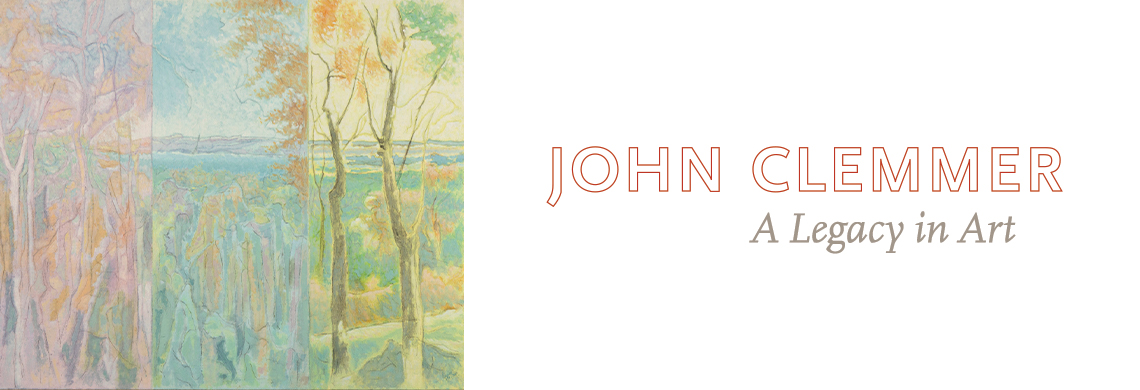John Clemmer: A Legacy in Art
July 22–November 7, 2021
Tuesday–Saturday, 9:30 a.m.–4:30 p.m.; Sunday, 10:30 a.m.–4:30 p.m.
520 Royal Street, Tricentennial Wing, 3rd Floor
Free ticketed admission
Book signing with Judith H. Bonner, John Ed Bradley, and David Clemmer
Sunday, November 7 | 1–3 p.m.
The Shop at The Collection, 520 Royal Street
About the Exhibition
Born in Acadiana on July 22, 1921, John Clemmer was a generously spirited luminary of the New Orleans art scene for more than seven decades, producing a body of modernist art while inspiring dozens of his fellow artists. He studied in the French Quarter at the Arts and Crafts Club’s School of Art and was the only artist to have been a student, teacher, and director of the Club and its school. Clemmer later taught at Tulane University’s School of Architecture and then chaired the Newcomb Art Department.
The new exhibition John Clemmer: A Legacy in Art, debuting on the centennial of his birth, features 62 of the artist’s works, including paintings, drawings, prints, and sculpture. A companion exhibition presents pieces by 76 artists Clemmer knew during his lengthy career. These include artists associated with the Arts and Crafts Club, the Orleans Gallery, Newcomb College, Tulane University, and the city at large. This is a wide-reaching exhibition and covers much of the history of art in the city of New Orleans during 75 years of Clemmer’s career—from 1939 to 2014.
John Clemmer: A Legacy in Art is accompanied by a companion book of the same title. With essays by Judith H. Bonner, the exhibition’s curator; John Ed Bradley, author and friend to the artist; and David Clemmer, the artist’s son, the book provides a comprehensive retrospective of Clemmer’s career and extraordinary legacy.
About the Companion Book
 John Clemmer: A Legacy in Art explores the life, work, and enduring influence of this groundbreaking Louisiana artist.
John Clemmer: A Legacy in Art explores the life, work, and enduring influence of this groundbreaking Louisiana artist.
Three essays trace Clemmer’s art and career—from his earliest studies at the Arts and Crafts Club of New Orleans, through his years on the faculties of Tulane University and Newcomb College, to his later work as an independent artist—and explore how the artists in Clemmer’s modernist circle shaped each other’s work in midcentury New Orleans.
Forty full-color plates and a comprehensive exhibition checklist round out this retrospective of Clemmer’s extraordinary legacy

